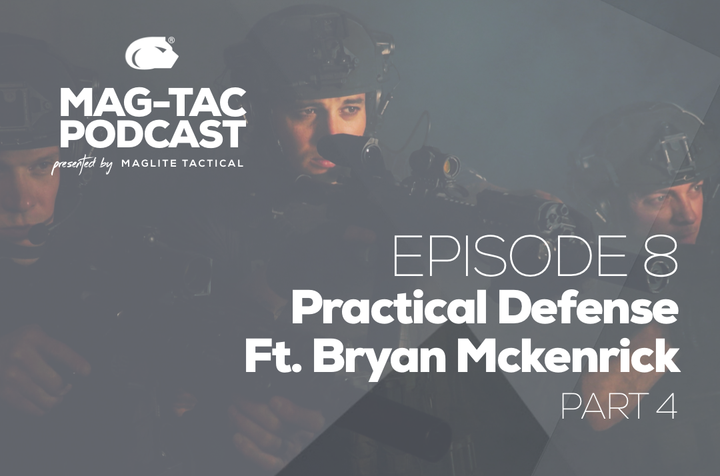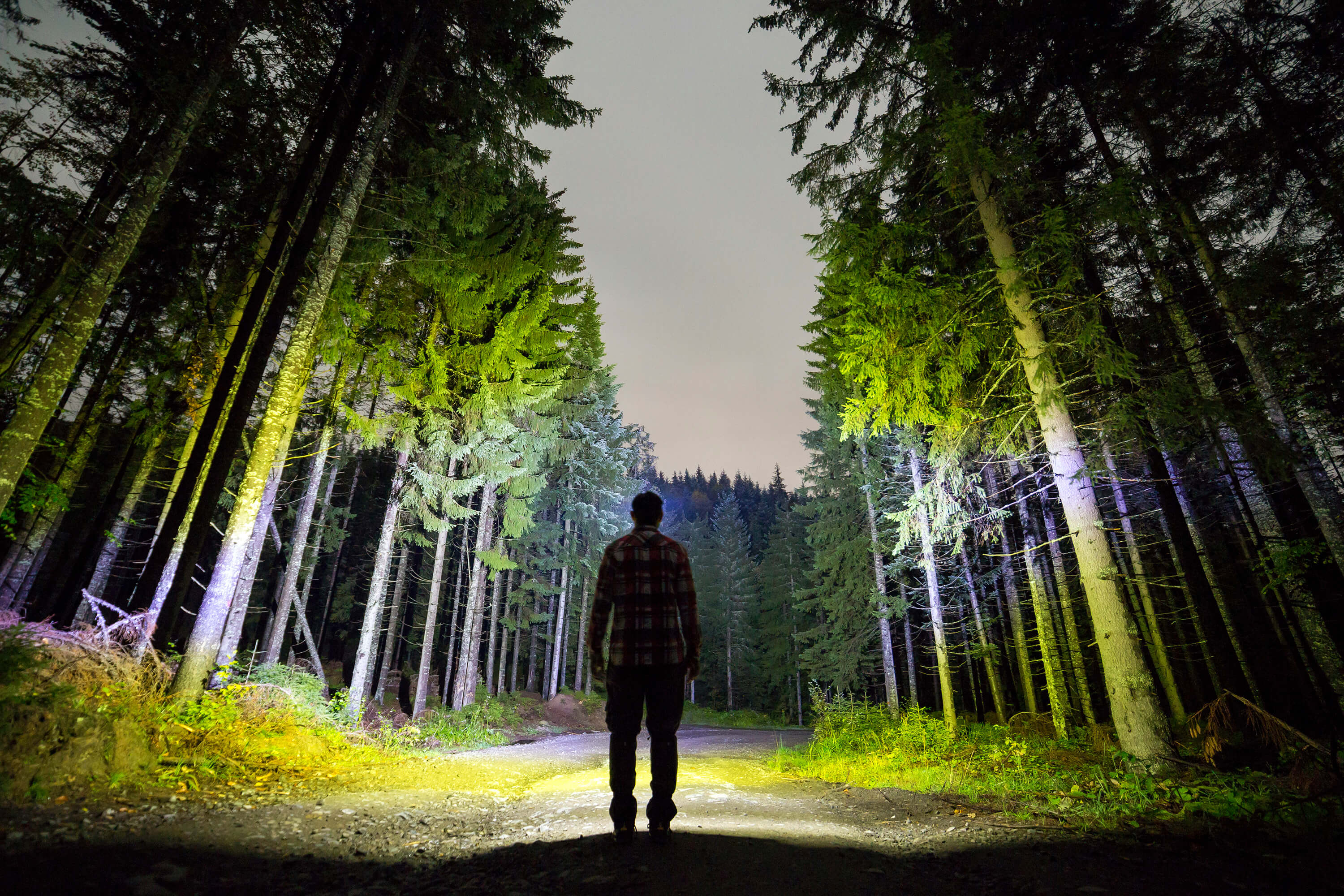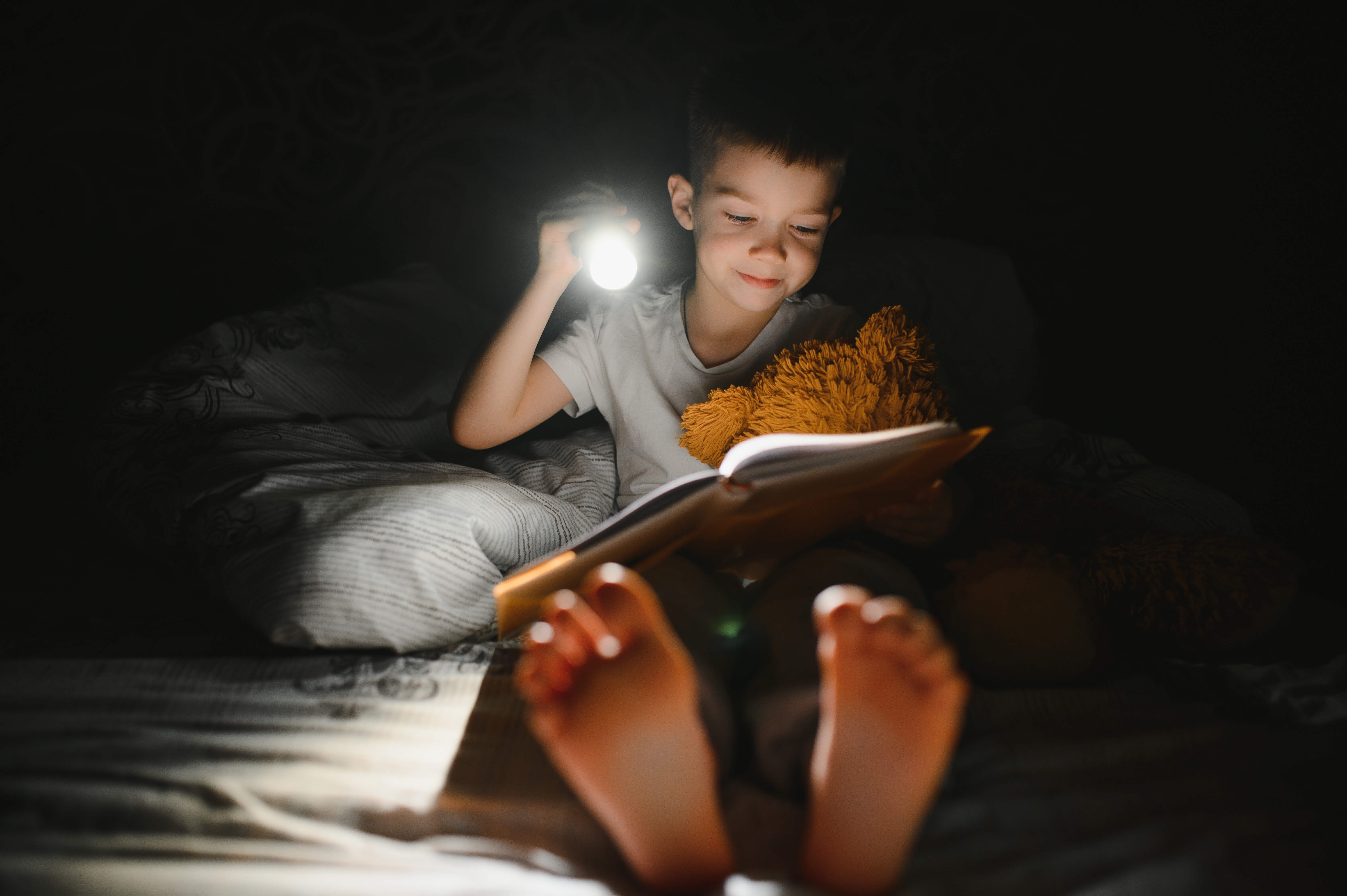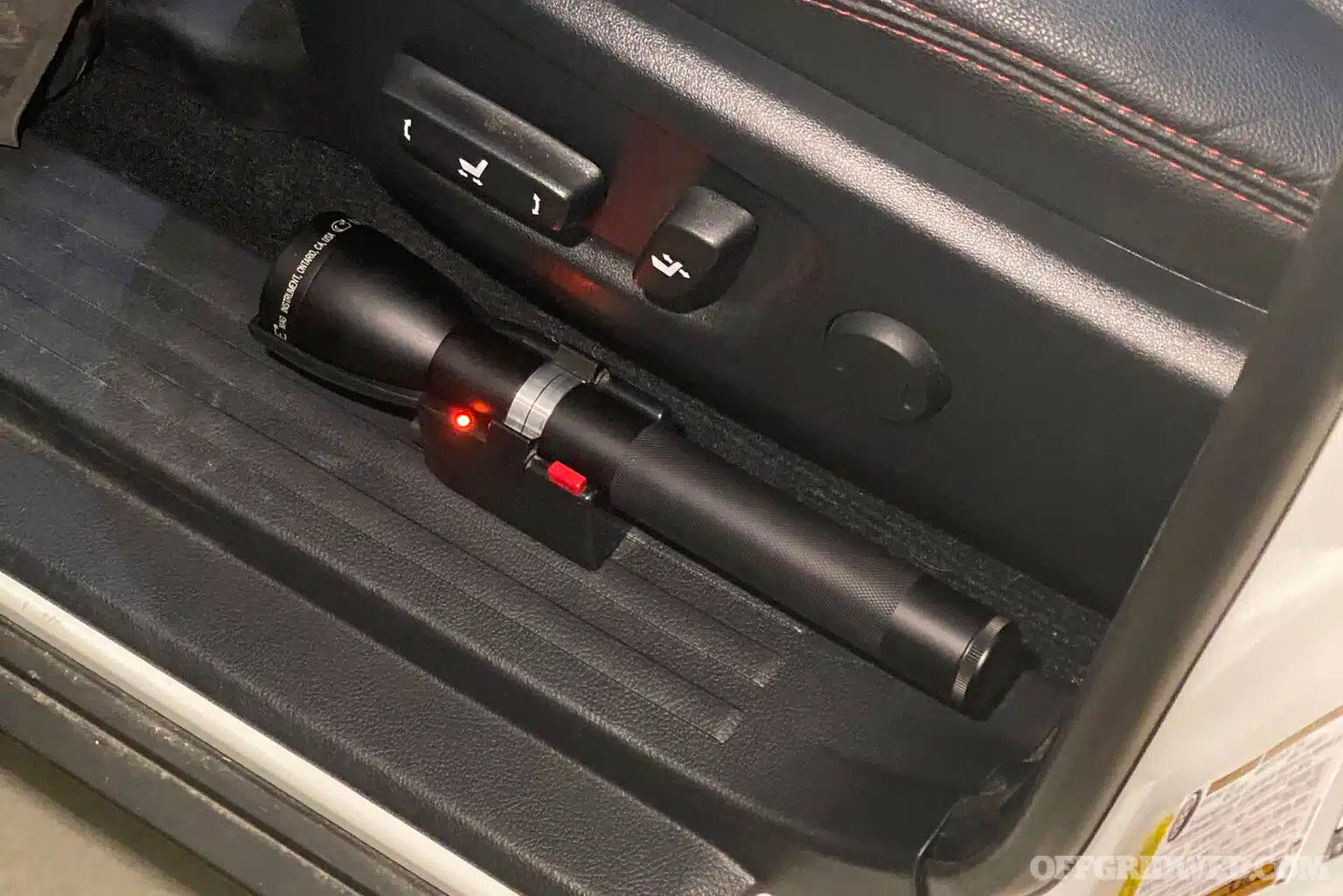Podcasts
Episode 7: Practical Defense ft. Bryan McKenrick (Part 3)
Bryan McKenrick, the leader and owner of American Tactical Defense, LLC., an Active Shooter Training Company, has spent a career in law enforcement doing drug interdiction operations with the Coast Guard and other law enforcement agencies. Bryan now trains law enforcement personnel on active shooter events and joins the MAG-TAC Podcast for Four (4) episodes. In this episode, Bryan discusses the tactics and practice of upping the Hide part of Run, Hide, & Fight, into barricading. How do you barricade? When do you barricade in a tactical situation, when you don’t and why? MAGLITE: 00:07 It's another edition of the MAG-TAC Podcast (by Maglite Tactical) where you're going to learn all sorts of things about keeping you and your family safe. It's all about safety and security, especially today... Things are going a little bit crazy out there and more than ever you need to be aware of your safety, your surroundings. If you're going to keep you and your family safe, unfortunately, in just about any situation, whether you’re at church, whether you're at a shopping mall, whether you are at an office, where you work. These things are happening everywhere now and anywhere. Joining us here, Bryan (McKenrick) from American Tactical Defense. Bryan, good to have you back. BRYAN MCKENRICK: 00:43 Hey, thank you very much. Looking forward to it. MAGLITE: 00:46 So we're going to talk on this podcast about the Pros and Cons of Barricading. What we've been going through with you is what you train people for, which is active shooters. You do a great job with local school districts. You've done businesses, you've done other places and all of it comes back to the basics of Run, Hide, (and) Fight. Hide, we talked about last time, it could be behind what is actual cover, or it could be behind just concealment. There's a difference between those two things. Go back, listen to the last episode of the podcast if you missed it to talk about those and how it's important to know the difference. But before we get to the pros and cons of barricading in the Hide part, Brian everyday carry. I have a certain pack that I carry with me that I think I need to have. What's in your everyday carry arsenal? BRYAN MCKENRICK: 01:44 Well, for me, in law enforcement, obviously, I'm in one, I have a gun, extra magazines and all that fun stuff. Well, ever. For everybody out there, you know, it's always a good idea. Like I'll carry, medical supplies because although I might not be there right at the scene, it might be over cause no matter, matter of seconds, sometimes they're done. I'll carry some extra medical supplies like a tourniquet and some chest seal pack material, all things that could potentially prolong someone's life to get him to the hospital, including my own. Really. That's why I do carry those. MAGLITE: 02:18 Gotcha. So, me, I have a little pack that I carry that has obviously a Maglite (flashlight). I've got a little tactical Maglite (flashlight) that I carry with me everywhere I go. I have a Gerber multi-tool, I have a nice Gerber knife and I have sort of an off-brand tactical pen that I really like. And unlike a lot of them, instead of being blunt, it is actually rather pointy. I could see it going through somebody's eyeball or ear easier than some of the other ones that I've seen. And that's just what I carry it. And the tactical pens, you know, don't talk to the FAA, but I basically carry it everywhere if you know what I'm saying. And I usually don't get stopped with. So that's sort of my last line of defense is that all right, let's talk about barricading. So, you haven't been able to run from the situation, you're caught in it or you have like that heroic police officer that stopped to help those kids in the mall when all the parents had apparently fled, or family members and you can't run anymore. You have a responsibility to protect these kids or you're just stuck where you are. You've tried to find concealment. Now let's talk about barricading pros and cons. BRYAN MCKENRICK: 03:29 Okay. So, barricade and yourself always, this training on lock the doors, lock the doors, lock the doors. Let's go to a school situation. When I asked you to do is think about this… If you're a teacher out there being in, you're teaching pre, well kindergarteners, first, second, third, fourth graders, maybe even fifth graders. At this point, if you start barricading your door in a school, I mean really with a desk with all these heavy bookshelves, and yet you have an active shooter on their shooting rounds through that wall, which could potentially end up in your classroom and potentially into you, for that matter. If that were to happen or any other children were injured or you're entered in the middle of it, who else is going to remove those barricades for fire, to respond, to get in or to help? So, what you have, is you just lock yourself into a safe and your folks are hurting side. It's just not gonna go real well. That's one thought. So now if you have barricading going on into a high school where other kids were able to get, you know, remove that stuff or move all the heavy items, that may work, but we always train to get ready to get on the offensive. So, we have different measures that we use. MAGLITE: 04:45 So barricading, although in some situations make sense. Again, this is something where people have to think this through and it's... I keep going back to this because this is difficult. You are in a place where most people's brains are going to vapor lock and you're asking people to think through the end of the situation where, okay, you may now be injured. All you've got is a bunch of little kids. They can't move the barricades and then you're going to bleed out because people don't know you're in there. BRYAN MCKENRICK: 05:17 Exactly. You got to think about it. Unfortunately, with this going on, it's a reality, I'll shoot it straight with you. If any person gets shot and it's an arterial bleed, which happens quite a quite a lot. You literally have anywhere from one minute to three minutes before you bleed out and that's it. So, we're always encouraging in our training, training the folks in medical, but if they get the tourniquet on and sort of slowing down the blood, you want fire(men) to get in there. Basically, you want them to get in and get you out to a hospital where they can work on you and save your life, basically. Law enforcement is at least a couple of minutes out, Fire, they're going to wait most likely for the scene to be clear, and that's going to be from 20 to 30 to 40 minutes. MAGLITE: 05:59 So, you're on your own, you're on your own. It's what I always tell people when seconds matter between life and death, help is only a few minutes away. right? BRYAN MCKENRICK: 06:08 Yeah, absolutely. It's all up to you. It really is. MAGLITE: 06:12 Yeah. Okay, well, that's as far as we're going to go. It's an interesting thought on barricading, here on this episode of the MAG-TAG Podcast (by Maglite Tactical), joined from Bryan (McKenrick) from America Tactical Defense. On the next episode, we're going to something that I think is really, really interesting, w
Learn moreEpisode 6: Practical Defense ft. Bryan McKenrick (Part 2)
Bryan McKenrick, the leader and owner of American Tactical Defense, LLC., an Active Shooter Training Company, has spent a career in law enforcement doing drug interdiction operations with the Coast Guard and other law enforcement agencies. Bryan now trains law enforcement personnel on active shooter events and joins the MAG-TAC Podcast for Four (4) episodes. In this episode, Bryan discusses hiding, the importance of distinguishing from concealment and cover, and the tactics of using both. MAGLITE: 00:07 Welcome back to the MAG-TAC Podcast. We're all about personal safety, keeping your family safe, and you're going to get a good dose of information about weapons, non-weapon defense, hiding, running, personal security, family security, and of course a lot about Maglite and how Maglite (flashlights) figure into your personal security. Joining us here on the MAG-TAC Podcast today, again for his second edition here on the MAG-TAC Podcast, we have Bryan (McKenrick) from American Tactical Defense. Bryan, how are you sir? BRYAN MCKENRICK: 00:45 Doing great Lou. Thanks for having me back. MAGLITE: 00:47 Great to have you back. You know, I have a personal favorite new Maglite (flashlight) and I don't know if we've gotten one into your hands. I know the ML150 the rechargeable, you've seen the 4-Cell and the smaller version as well. The Maglite (brand) has a new product, which is a flashlight that will stay on for over two weeks of continuous use. So this is we're billing as the ultimate survival lights. And if you are someone who's going to need a reliable Maglite that you can call on at any time and you're going to be sure it's going to work, this is the ultimate survival light and you're going to want to check it out @ maglite.com . All right, Bryan. So let's talk about hiding because the process we've learned in a tactical situation run first, hide if you can't run. So let's talk about hiding. What's covered, what isn't covered, how do you find it? Let's go through it. BRYAN MCKENRICK: 02:06 Right? (Inaudible) You find yourself having to hide. You got to think about Cover and Concealment. Basically now. Cover is anything that will stop a bullet while Concealment is just simply hiding where your location is. So, if you are behind walls within a home, for example, that's the only dry wall and that is only as good as concealment, so don't let that false sense of security feel safe because bullets do travel through walls. If you're behind a large concrete wall, barrier, anything like that in-between, that's good cover. So ideally you want to get out of the scene, out of the area view for sure and you want to make sure that if you have kids with you in classrooms, you want to get them off to at 90 degree offset away from that what we call a fetal funnel, which is the opening of the doorway and anything that he can see or spray bullets at. MAGLITE: 03:04 Okay. So to recap that, just go through that one more time to make sure people heard it and understood it clearly. BRYAN MCKENRICK: 03:11 Yeah, absolutely. So if you're a teacher and you have kids in a classroom, you're out in the mall ...you're going to have to hide somewhere, get away from the doorway off to the side, get down under in a low position and you want to get under something that is solid, like a solid wall. If you're out in a parking lot, which has this happened in a Walmart, they'll pass a shooting. If there's shooting going on out there and get behind engine blocks, get behind rims of wheels, stuff that is steel and heavy that should stop a bullet. MAGLITE: 03:41 So you have to think about Concealment vs Cover and just to go over this again, concealment is just, yeah, you're hiding behind something. But if it's plywood or it's an aluminum store shelf that's not stopping a bullet. Concealment is one thing, but Cover means being behind something that's got some heft that's going to stop a bullet. BRYAN MCKENRICK: 04:04 Exactly. You don't want to be hiding behind a piece of paper when somebody's just randomly firing into one of those, bullets could travel right through it. Even like you said, just then pieces of wood it'll go through. We've tested them at the range. We tested various objects. MAGLITE: 04:17 So this situation is one where people have to again, be more aware. You have to be thinking about things. How do you train people to think, Bryan, in a panic situation? What, how do people get good at that? BRYAN MCKENRICK: 04:38 Yes. Good point. How do you train yourself to react in a proper way? You don't want hesitation. So with that being said, you have to live through like an experience. You have to go through it. If you banged your car up against somebody else's in a fender bender, you're more likely to know what to do when cards breaks all upset instead of freak out. Same thing with this. If you run through reality based training scenarios where you have someone portraying the shooter and you run through it, you're going to get that adrenaline rush and guess what? It's going to personalize you, with that situation. Therefore, you will always remember from there out on what you need to do. You'll get past the hesitation and you'll react according to training and training takes reps. You have to do it over and over, MAGLITE: 05:21 And this is why I read a book called "Deep Survival: Who Lives, Who Dies, and Why" (by Laurence Gonzales) many years ago. I don't ask me why I'm a freak about survival situations. I just enjoy reading about them and so this, I'll never forget them saying, pay attention when you're getting on an airplane and they're pointing out where the exits are. Pay attention to any safety stuff that you're being told when you're on a cruise ship, when you're on something that you're unfamiliar with because the people that die are the people that didn't listen and they weren't prepared and they didn't go through it in their head and that's basically what you're saying is a much more advanced version of that which is, you have to go through it, which is why you guys do the reality based training that you do at your American Tactical Defense. BRYAN MCKENRICK: 06:03 Yeah, absolutely. You always want to think about stuff ahead of time. What if, what if? We don't want him to compare it. However, with that being said, Be Alert. You know, don't walk out aimlessly out of your car without looking around, you know, just think of things that will put you in a better situation. MAGLITE: 06:21 All right, that's Bryan from American Tactical Defense here on another episode of the MAG-TAC podcast (by Maglite Tactical). By the way, ML300L LED (4D) is the Maglite (flashlight) I was talking about earlier and give you over two weeks of continuous light. Got to check it out, ML300L 4-Cell LED. All right. We're going to talk about next time we have Bryan on the podcast. Next week we're going to be talking about Barricading: Pros and Cons of that. Why you do it, why you don't, how to do it, how not to do it. This has been the MAG-TAC podcast (by Maglite Tactical). Thanks for listening. Talk to you again soon
Learn more




